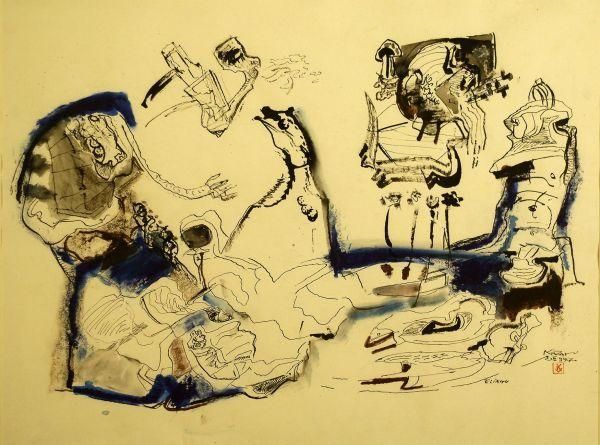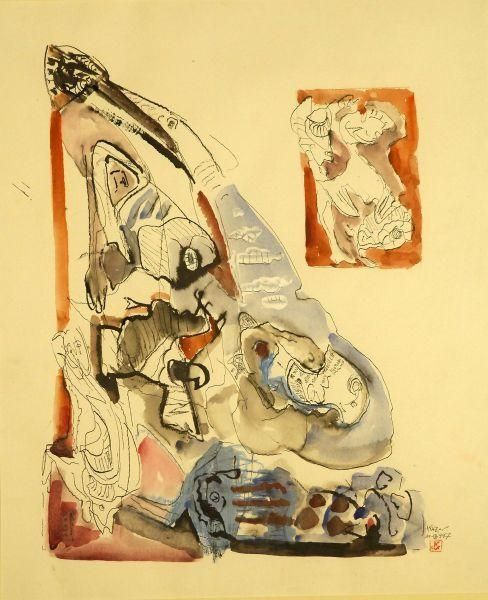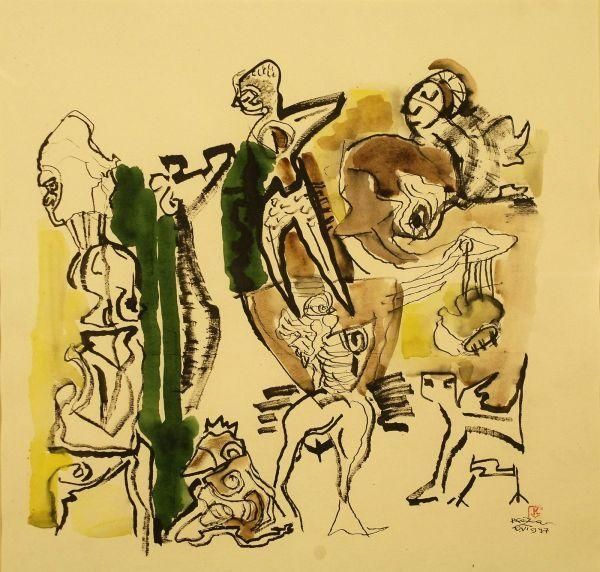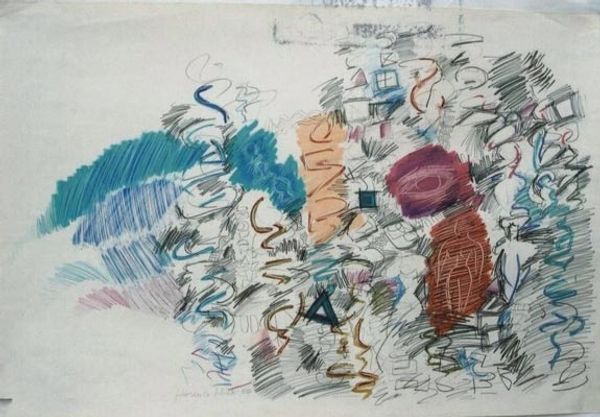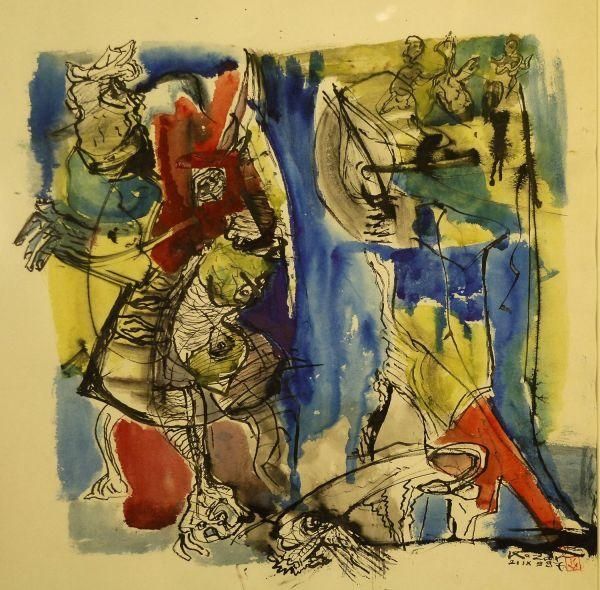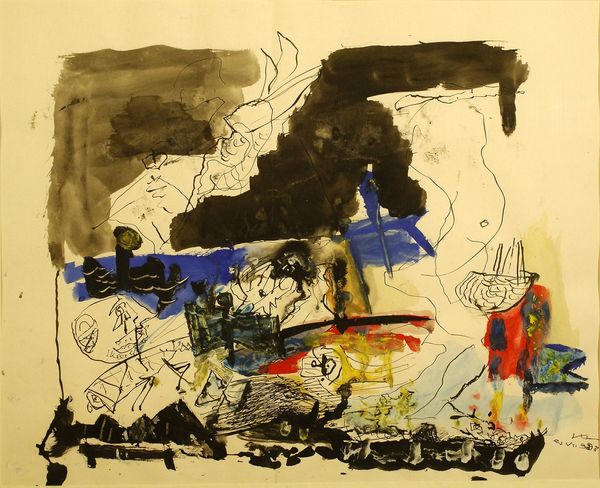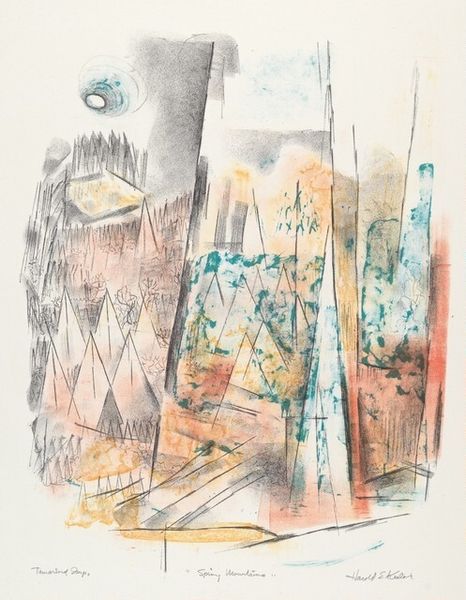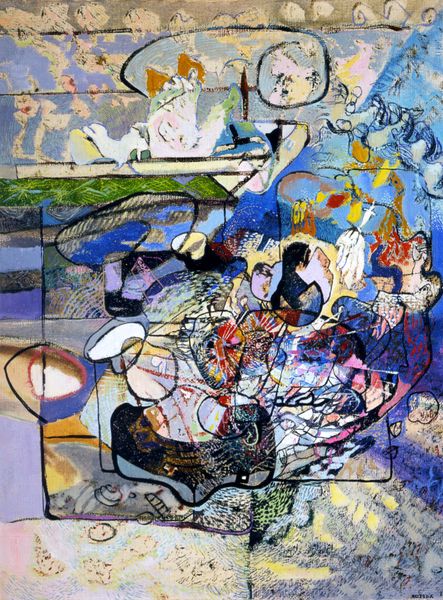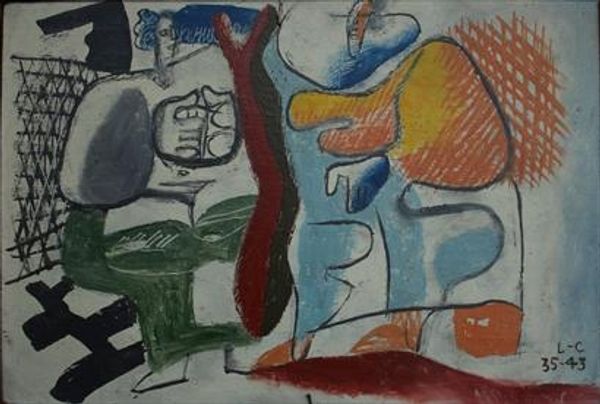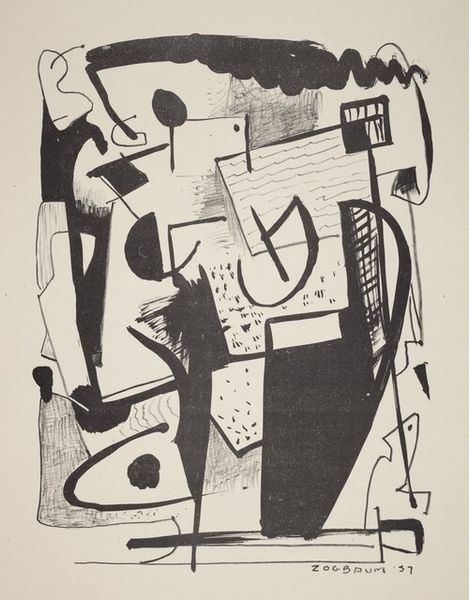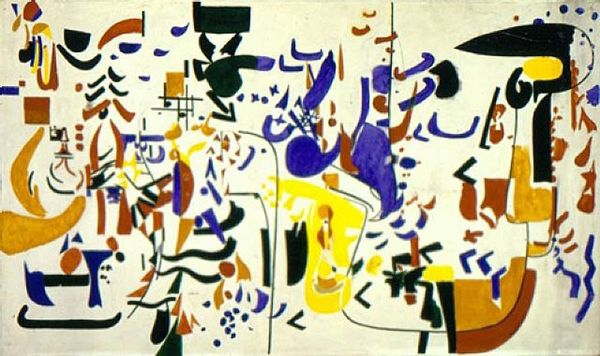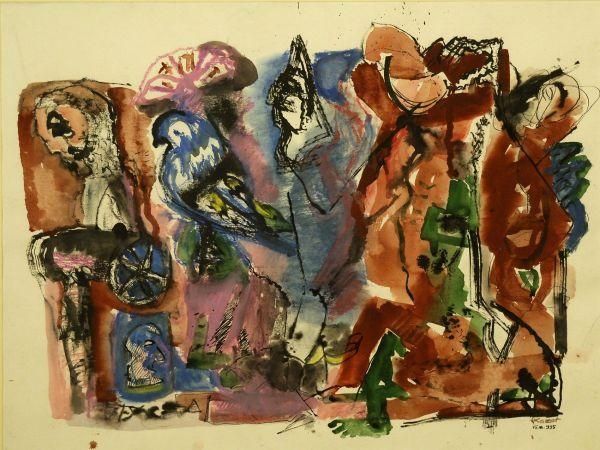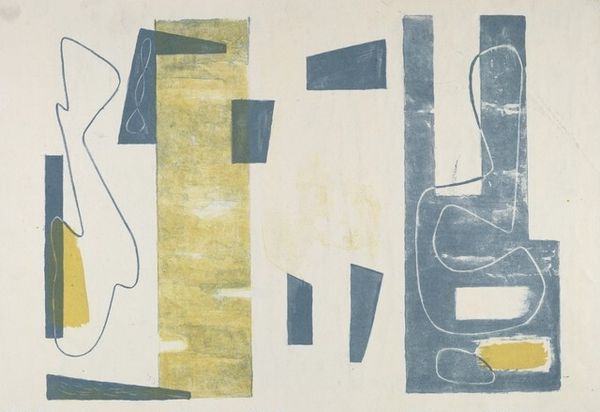
drawing, watercolor, ink
#
landscape illustration sketch
#
drawing
#
quirky sketch
#
pen sketch
#
personal sketchbook
#
watercolor
#
ink
#
sketchwork
#
sketch
#
pen-ink sketch
#
abstraction
#
line
#
sketchbook drawing
#
watercolour illustration
#
sketchbook art
#
watercolor
Copyright: Vasile Kazar,Fair Use
Curator: Before us is an untitled drawing by Vasile Kazar, rendered in ink and watercolor. What strikes you upon first viewing? Editor: Well, the chaotic composition is the first thing that comes to mind. It's like a whirlwind of shapes, lines, and blotches of color barely contained on the page. Is this supposed to be a landscape? Curator: The tags suggest a landscape illustration sketch, although it leans toward abstraction, doesn't it? Look at how line quality varies— from frantic scribbles to controlled contours that manage to imply form and volume. Note how Kazar is using watercolor. Translucent washes of color provide depth where they pool, but appear ephemeral where applied sparsely. Editor: That sparse application speaks to me. The immediacy of sketch work is often prioritized due to scarcity, yet, the quality of the drawing still seems fairly labored. I imagine the artist worked at length building up the image one layer at a time and across a wide array of subjects. The materiality here seems very accessible. This has the feel of something quick that could be put in your backpack on a cross country trip, in other words, something with utilitarian function. Curator: Precisely! Consider the influence of personal sketchbooks— intimate spaces where the artist explores and experiments, divorced from public scrutiny and external expectation. There is a rawness here that foregrounds mark-making. It does more than simply capture an external scene, it makes visible the artist's subjective, perceptual and cognitive processes, wouldn't you say? Editor: Indeed. But perhaps Kazar’s process wasn't purely self-exploration, especially considering there are identifiable fish at the bottom. As simple as those sketches seem, their existence on the page must speak to how and why he chose to apply his materials in the ways that he did, either reflecting food scarcity or the accessibility of certain environments. To me, this feels quite loaded despite its playful appearance. Curator: So, even within these ambiguous, fluctuating forms, you identify evidence of his world seeping in. I concede the materiality encourages seeing more than just a personal visual record here, a way that the art is embedded with specific functions that mirror outside world conditions. Editor: Exactly. The tactile, everyday process suggests art need not be separated from work and life; the sketch offers Kazar ways to make records. Curator: I now recognize, thinking along the lines of structural properties can confine interpretation, because it can remove those outside conditions that materially influenced how Kazar employed each line and watercolor spot in this piece. Thanks for shedding some insight on Kazar’s art, seeing it as both aesthetically potent, and deeply embedded. Editor: My pleasure!
Comments
No comments
Be the first to comment and join the conversation on the ultimate creative platform.
